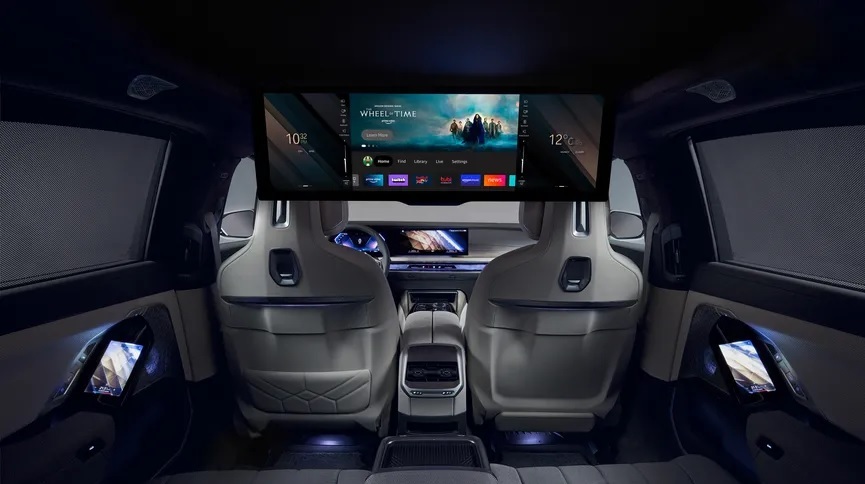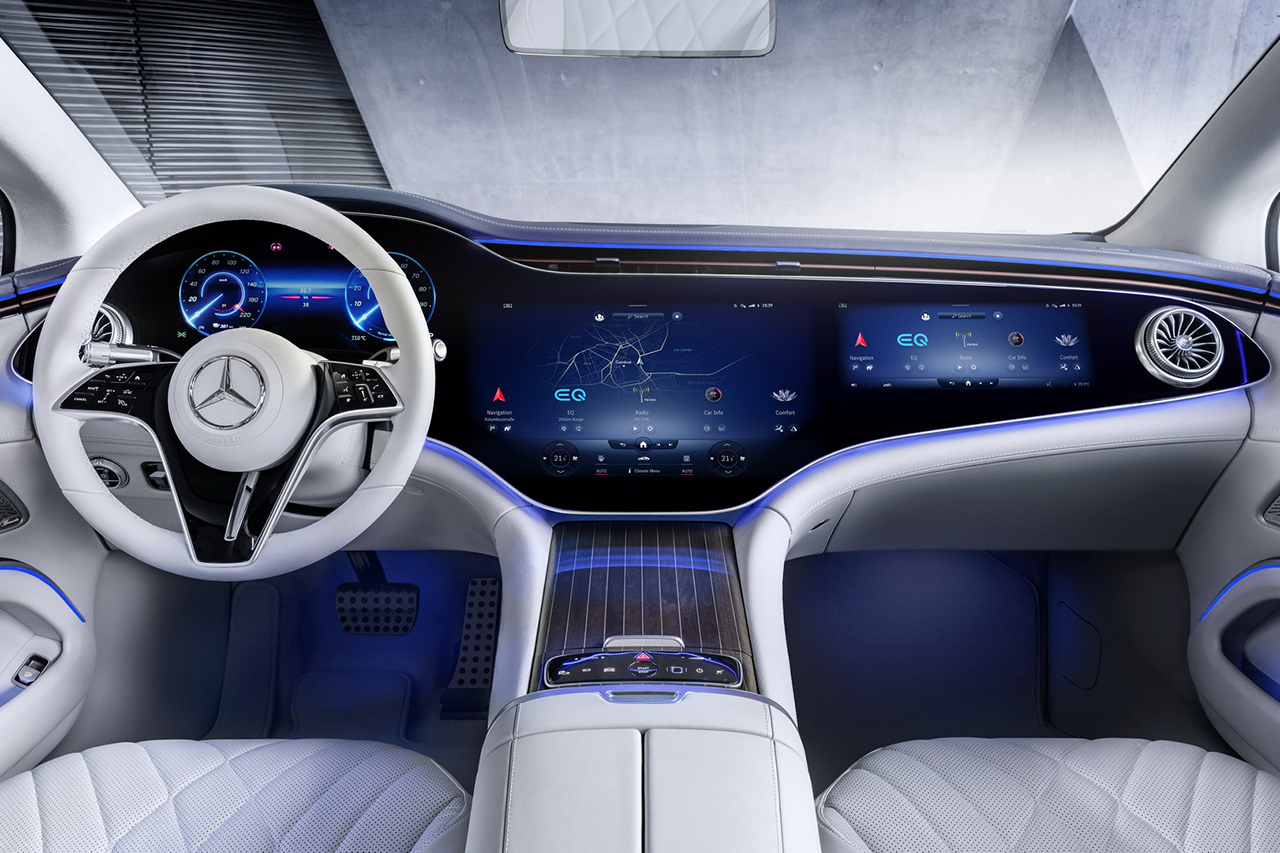Playing games at back seats: carmakers focus on in-car entertainment
By Kim Da-solPublished : May 30, 2022 - 15:27

Carmakers’ efforts to turn vehicles into moveable spaces for media platforms will lead to more collaborations between carmakers, content providers and IT companies, as well as the growth of related markets, according to the industry on Monday.
Carmakers have been seeking ways to upgrade the in-car entertainment experience, by developing software for playing games and watching videos. Carmakers are also introducing wide multi-screens that can also satisfy passengers in the back seats.
Tesla’s Model S Plaid is capable of running high-performance computer chips like Cyberpunk 2077 and game applications on its on-board computer. The computer can display full graphics in a 17-inch horizontal screen attached next to the steering wheel. It has 10 teraflops of computing power, making it comparable to playing Sony PlayStation 5 games on a computer. However, the driver cannot play games while driving.
Tesla offers continuous upgrades of its infotainment system and in-car entertainment programs of its flagship model Model S through its Over The Air software upgrade system. Some of the streaming media options available in Tesla cars include Netflix and Disney+.
To develop streaming platforms designed for vehicles, Hyundai Motor Group has been working with the country’s leading content platform provider CJ ENM and streaming service provider Tving from earlier this year. Hyundai seeks to establish an in-car streaming content service platform which would be exclusive to the carmaker’s connected car system. Based on their expertise in content creation, CJ ENM and Tving will create video and audio content and develop in-car applications for content streaming.
Market experts noted that carmakers’ efforts to develop more EVs will not only develop related technology, but also lay the groundwork for the in-car content industry’s growth.
“More sophisticated, advanced technology in building electric vehicles will not only enhance EVs’ performance, but also grow the in-car entertainment business, as high-capacity batteries used in EVs will offer sufficient electricity to run various programs inside a car, as people spend more time inside their cars while charging,” said Kim Pil-soo, a professor of automotive engineering at Daelim University.
“With more vehicles running on their own automated driving systems, the market and technology for in-car content and media platforms will rapidly expand.”
Besides software, carmakers are also adopting larger multi-display screens inside cars to offer a more versatile entertainment and content experience to passengers.
In BMW’s latest 7 Series model unveiled to the Korean market last week, a 31.3-inch 8K display has been put in for passengers in the back seat. This theater screen folds into the roof, looking like a thick crossbar dividing the glass when not in use. For models launched in the US, the 7 Series has 5G wireless connection capacity and built-in Amazon Fire TV. Passengers can stream content in 4K UHD on apps like Amazon Prime. This model will hit the Korean market in the second half of this year.

Mercedes-Benz has also launched the industry’s largest 56-inch touchscreen, called Hyperscreen, for its flagship EV model EQS. It is powered by MBUX, short for Mercedes-Benz User Experience. MBUX was introduced in 2018 as one of the more capable automaker-created, voice-controlled infotainment systems on the market. Models with MBUX have been on the Korean market at 170 million won ($137,000) from earlier this year.



![[Exclusive] Korean military set to ban iPhones over 'security' concerns](http://res.heraldm.com/phpwas/restmb_idxmake.php?idx=644&simg=/content/image/2024/04/23/20240423050599_0.jpg&u=20240423183955)




![[Herald Interview] 'Amid aging population, Korea to invite more young professionals from overseas'](http://res.heraldm.com/phpwas/restmb_idxmake.php?idx=644&simg=/content/image/2024/04/24/20240424050844_0.jpg&u=20240424200058)

![[Pressure points] Leggings in public: Fashion statement or social faux pas?](http://res.heraldm.com/phpwas/restmb_idxmake.php?idx=644&simg=/content/image/2024/04/23/20240423050669_0.jpg&u=)









